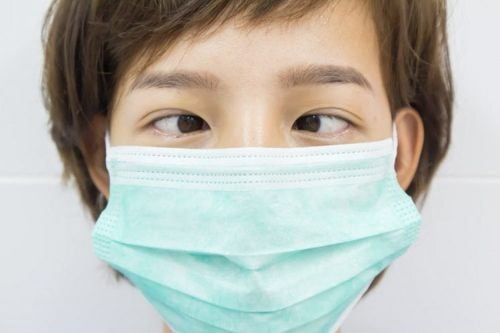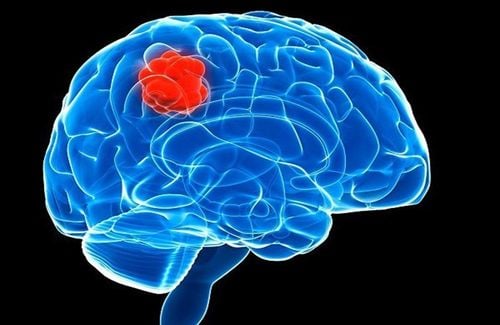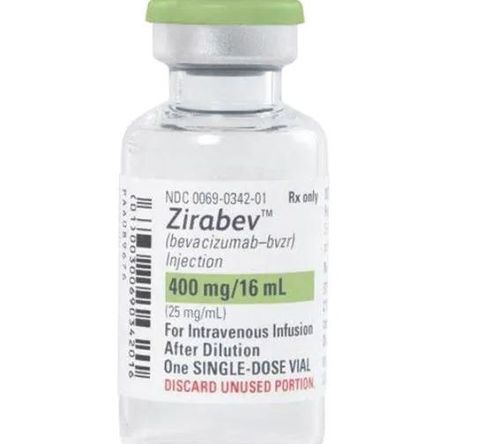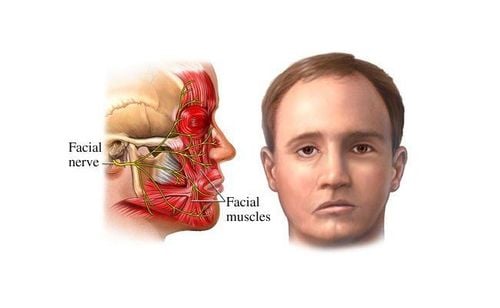This is an automatically translated article.
The article is professionally consulted by Specialist Doctor I Tran Thi Ngat - Department of General Surgery - Vinmec International General Hospital Da Nang. Dr. Ngat has over 15 years of experience as an Anesthesiologist.Placing a brain positioning frame has been effectively applied in the treatment of brain tumors by surgery. Accordingly, the surgical procedure of laryngeal mask anesthesia to place the brain positioning frame should be followed to ensure the safety of surgery in cases of brain tumor and difficult intubation.
1. What is laryngeal mask anesthesia for brain positioning surgery?
Laryngeal mask anesthesia is a method of general sedation with active control of artificial respiration by using a laryngeal mask. Compared with the traditional method of anesthesia, which is the use of an endotracheal tube, this indication will be chosen in cases of difficult intubation. Moreover, if the patient was able to put on a breathing tube, there is still a risk of compression or blockage of the tube due to the surrounding tissues, then anesthesia with a laryngeal mask will be a suitable alternative.Accordingly, when the patient is anesthetized with a surgical mask of the larynx, a brain positioning frame is placed, the location and size of the tumor will be easily located and identified. This is the advantage of brain tumor treatment cases where the brain is placed in a positioning frame, the incision is made with minimal trauma and the diseased part of the brain tumor is guaranteed to be thoroughly resected.
However, some obstacles when performing laryngeal mask anesthesia for brain positioning surgery are only applied in elective surgeries, it is not convenient when the stomach is full because the patient has not fasted for enough time. or have complex maxillofacial lesions due to trauma or infection. In addition, surgical laryngeal mask anesthesia for brain positioning also requires basic conditions for general surgical interventions such as professional human resources or essential anesthetic and resuscitation facilities.

2. Preparatory steps in laryngeal mask anesthesia for surgery to place a brain positioning frame
About human resources:Doctors, technicians or nurses specializing in anesthesiology and resuscitation.
About means:
Pure oxygen supply
Anesthesia machine system with controlled artificial respiration control function Life monitor based on parameters such as electrocardiogram, arterial blood pressure , SpO2, EtCO2, breathing rate, temperature Means to carry out intensive resuscitation such as defibrillator, suction machine Laryngeal mask of all sizes Equipments to assist in placing laryngeal mask such as straws, masks (masks) ), ball squeeze, oropharyngeal canul. Prophylactic means for intubation: endotracheal tubes of various sizes and laryngoscopes. Local anesthetics such as lidocaine 10% spray. Rapid-acting topical bronchodilators such as salbutamol spray.

Have routine anesthetic examination before surgery to detect and prevent risks for surgery. Specialized examination and stable treatment of accompanying chronic medical diseases, especially cardiovascular diseases and chronic lung diseases. Patients and relatives are explained about the surgical procedure of laryngeal mask laryngeal mask placement, including possible associated risks and complications. Patients are explained and guided to cooperate in the steps of pre-operative preparation and anesthesia. Assess difficult laryngeal mask placement and develop contingency plans. Consider prescribing a sedative the night before surgery if the patient is anxious or stressed. Regarding administrative procedures:
A set of medical records according to regulations of the Ministry of Health Pre-operative tests according to regulations A written commitment to consent to perform surgery signed and certified by the patient or his/her family member or representative.
3. Steps to carry out anesthesia with laryngeal mask surgical brain positioning frame
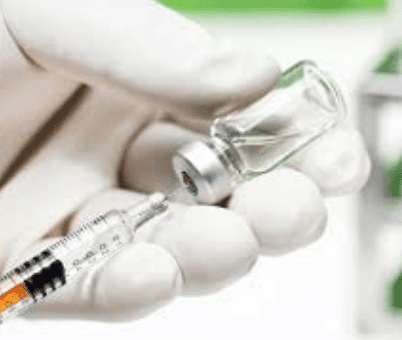
Place the patient's head in an intermediate or slightly supine position. Hold the larynx mask as if holding a pen, and place the index finger at the junction between the laryngeal mask and the tube. One hand opens the patient's mouth with the other hand. Insert the laryngeal mask through the dental arches to the base of the tongue, place the back of the mask on the hard palate, push the mask to slide along the hard palate into the hypopharynx Stop when encountering resistance Inflate the cuff according to the volume indicated above Laryngeal mask Check tightness of laryngeal mask (no air leak, easy ventilation) Check correct position of laryngeal mask by auscultation and EtCO2 result Fixed with adhesive tape. Anesthesia maintenance techniques:
Maintain anesthesia with intravenous or volatile anesthetics, analgesics and muscle relaxants if needed. Control breathing by machine or hand squeeze. Monitor the depth of anesthesia based on heart rate, blood pressure, sweating, lacrimation (PRST); MAC, BIS and Entropy (if any)... Monitor vital signs: heart rate, blood pressure, SpO2, EtCO2, body temperature. Preventing the wrong position, retraction, folding, and obstruction of the laryngeal mask.
4. Monitoring and post-operative care after anesthesia with laryngeal mask surgical brain positioning frame

Hemodynamic disturbances: Common forms of hypotension or hypertension, arrhythmias due to sedative effects or underlying disease. Approach and management will depend on symptoms and causes.
Complications related to laryngeal mask placement: The most severe is reflex constriction of the upper airway and the treatment is emergency intubation. Trauma to the airways during insertion of the device that causes pain, hoarseness, or swelling may require treatment or self-resolving.
In summary, surgical laryngeal mask anesthesia with brain positioning frame is a way to facilitate surgical intervention in patients who are indicated for brain tumor surgery but have difficulty intubating. Besides the traditional method of endotracheal intubation, laryngeal mask anesthesia not only solves the obstacles in airway control but still ensures favorable conditions for the surgery.
Vinmec International General Hospital with a system of modern facilities, medical equipment and a team of experts and doctors with many years of experience in medical examination and treatment, patients can rest assured to visit. examination and treatment at the Hospital.
Please dial HOTLINE for more information or register for an appointment HERE. Download MyVinmec app to make appointments faster and to manage your bookings easily.






